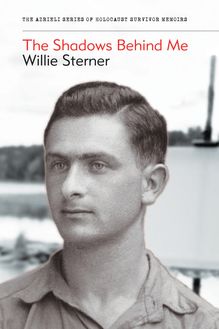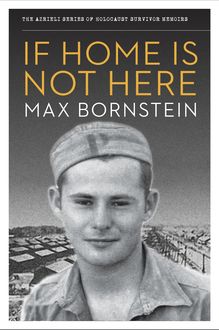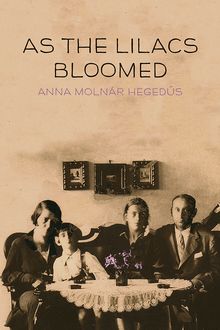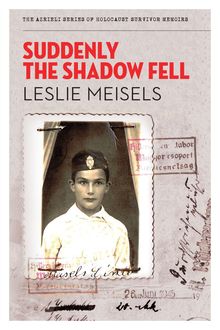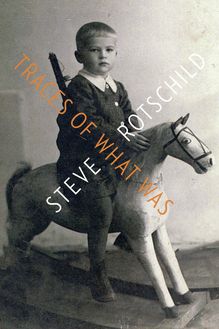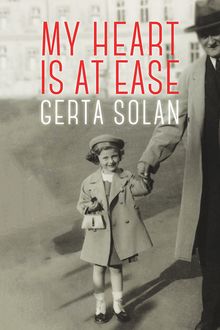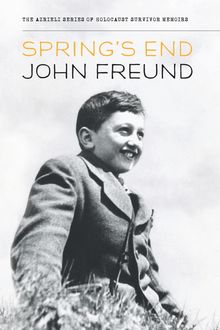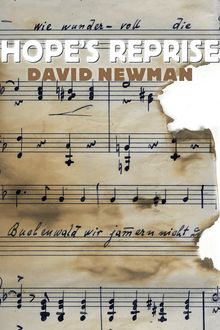-
 Univers
Univers
-
 Ebooks
Ebooks
-
 Livres audio
Livres audio
-
 Presse
Presse
-
 Podcasts
Podcasts
-
 BD
BD
-
 Documents
Documents
-
- Cours
- Révisions
- Ressources pédagogiques
- Sciences de l’éducation
- Manuels scolaires
- Langues
- Travaux de classe
- Annales de BEP
- Etudes supérieures
- Maternelle et primaire
- Fiches de lecture
- Orientation scolaire
- Méthodologie
- Corrigés de devoir
- Annales d’examens et concours
- Annales du bac
- Annales du brevet
- Rapports de stage
La lecture à portée de main
Vous pourrez modifier la taille du texte de cet ouvrage
Découvre YouScribe en t'inscrivant gratuitement
Je m'inscrisDécouvre YouScribe en t'inscrivant gratuitement
Je m'inscrisEn savoir plus
Vous pourrez modifier la taille du texte de cet ouvrage
En savoir plus

Description
Sujets
Informations
| Publié par | Azrieli Foundation |
| Date de parution | 01 septembre 2013 |
| Nombre de lectures | 1 |
| EAN13 | 9781897470756 |
| Langue | English |
| Poids de l'ouvrage | 20 Mo |
Informations légales : prix de location à la page 0,0300€. Cette information est donnée uniquement à titre indicatif conformément à la législation en vigueur.
Extrait
In Hiding
Marguerite Élias Quddus A memoir illustrated by the author
TRANSLATED FROM FRENCH BY PHYLLIS ARONOFF
The Azrieli Series of Holocaust Survivor Memoirs
INTERNATIONAL ADVISORY COUNCIL
Doris Bergen, Chancellor Rose and Ray Wolfe Chair in Holocaust Studies, University of Toronto
Sara R. Horowitz, Director of the Israel and Golda Koschitzky Centre for Jewish Studies, York University
Nechama Tec, Professor Emerita of Sociology, University of Connecticut
Avner Shalev, Chairman of the Yad Vashem Directorate, Jerusalem
Naomi Azrieli, Publisher
Andrea Knight, Managing Editor
Jody Spiegel, Program Director
Arielle Berger, Editor
Elizabeth Lasserre, Senior Editor, French-Language Editions
Aurélien Bonin, Assistant Editor / Researcher, French-Language Editions
Elin Beaumont, Educational Outreach and Communications
Tim MacKay, Social Media and Marketing
Susan Roitman, Executive Coordinator (Toronto)
Mary Mellas, Executive Coordinator (Montreal)
Michaela Ryan, Program Assistant
Mark Goldstein, Art Director
Nicolas Côté, Layout, French-Language Editions
François Blanc, Cartographer
Contents
The Azrieli Series of Holocaust Survivor Memoirs
Series Preface: In their own words...
About the Glossary
Introduction
Maps
Dedication
Acknowledgements
Author’s Preface
Part One: Under My Parents’ Protection
Part Two: At The Mercy Of Others
Part Three: The Long Road Home
Epilogue
Appendix
Glossary
Photographs
Copyright
About the Azrieli Foundation
Also Available
Series Preface: In their own words...
In telling these stories, the writers have liberated themselves. For so many years we did not speak about it, even when we became free people living in a free society. Now, when at last we are writing about what happened to us in this dark period of history, knowing that our stories will be read and live on, it is possible for us to feel truly free. These unique historical documents put a face on what was lost, and allow readers to grasp the enormity of what happened to six million Jews – one story at a time.
David J. Azrieli , C.M., C.Q., M.Arch
Holocaust survivor and founder, The Azrieli Foundation
Since the end of World War II , over 30,000 Jewish Holocaust survivors have immigrated to Canada. Who they are, where they came from, what they experienced and how they built new lives for themselves and their families are important parts of our Canadian heritage. The Azrieli Foundation’s Holocaust Survivor Memoirs Program was established to preserve and share the memoirs written by those who survived the twentieth-century Nazi genocide of the Jews of Europe and later made their way to Canada. The program is guided by the conviction that each survivor of the Holocaust has a remarkable story to tell, and that such stories play an important role in education about tolerance and diversity.
Millions of individual stories are lost to us forever. By preserving the stories written by survivors and making them widely available to a broad audience, the Azrieli Foundation’s Holocaust Survivor Memoirs Program seeks to sustain the memory of all those who perished at the hands of hatred, abetted by indifference and apathy. The personal accounts of those who survived against all odds are as different as the people who wrote them, but all demonstrate the courage, strength, wit and luck that it took to prevail and survive in such terrible adversity. The memoirs are also moving tributes to people – strangers and friends – who risked their lives to help others, and who, through acts of kindness and decency in the darkest of moments, frequently helped the persecuted maintain faith in humanity and courage to endure. These accounts offer inspiration to all, as does the survivors’ desire to share their experiences so that new generations can learn from them.
The Holocaust Survivor Memoirs Program collects, archives and publishes these distinctive records and the print editions are available free of charge to libraries, educational institutions and Holocaust-education programs across Canada. They are also available for sale to the general public at bookstores.
The Azrieli Foundation would like to express appreciation to the following people for their invaluable efforts in producing this book: Sherry Dodson (Maracle Press), Sir Martin Gilbert, Farla Klaiman, Michael Quddus, and Margie Wolfe and Emma Rodgers of Second Story Press.
About the Glossary
The following memoir contains a number of terms, concepts and historical references that may be unfamiliar to the reader. For information on major organizations; significant historical events and people; geographical locations; religious and cultural terms; and foreign-language words and expressions that will help give context and background to the events described in the text, please see the Glossary .
Introduction
Out of the shadows and into the light…
Marguerite Élias Quddus tells us the story the history books do not tell: the turmoil of war as experienced by a very young child who has only a superficial understanding of the historical context. Little Marguerite takes us into her world before the war and her happy life within her family. The drawings and descriptions evoke a past world that is little known to most of us: the everyday life of an immigrant Jewish family in pre-World War II Paris. Although only a small child, Marguerite has already encountered antisemitism in the unkind comments the landlord has made to her father. But life is on the whole peaceful – until the war that plunges the lives of Marguerite and her family into terror.
The author has chosen to create a portrait of the little girl she was, with all her joys and sorrows, her ways of thinking and her values. Indeed, it is her hope that she will be read and understood by children, whose company she enjoys and to whom she relates very well.
But putting her memories into writing did not come easily to Marguerite. It took a particular event to precipitate the confrontation with her past. That event was the announcement of the impending demolition of 99 rue de Charonne, her childhood home before the war. She returned to that house before the work started and the flood of images that sprang into her mind brought her back to the dark years of the war. She wanted to write about them but was unable to do so. Her son, Michael, suggested that she draw her most painful memory. Using her artistic talent, she began with great difficulty to draw the scene of her parting with her father, when he was taken away in the first roundup in the 11th arrondissement, where the family lived. This initial drawing gave rise to an almost visceral need to create more drawings. It was not unusual for Marguerite to become so absorbed in her work, so oblivious to her surroundings, that she felt as if she were under a spell. Little by little, she reconstructed her past. After two years, the drawings were finished, with written explanations that, over time, would become an actual narrative.
Writing that narrative demanded such intensive work on her emotions that Marguerite says it was her therapy. Indeed, she did not merely enumerate the facts, she relived the feelings, which were often terrifying. She drew on her visual memory to enter into her past and on her musical sense to write: she put down the whole story in verse. She felt this music allowed the expression of her emotions to come more easily. However, in order to make the text lighter and more accessible to a broad public, it has been modified in our edition and returned to prose. But the main qualities of Marguerite’s style have not been altered: the musicality of the writing, the succinctness of the sentences, the realistic quality of the dialogue, the immediacy of the present tense. The author has deliberately re created the simple, even childish, language of the little girl she was, in order to give a voice to that child, who could not express herself. This means that the story can be read by young people as well as by adults without losing any of its richness and immediacy.
Both adults and children can understand the magical attraction the blue telephone has for Marguerite. A toy given to her after her father’s arrest, it allows her to deal with the pain of his absence and, later, to endure the victimization of the family. The telephone is a marvellous symbol of freedom regained: the child can telephone whomever she wants, whenever and wherever she wants. It offers her the hope of being able to reach her world before the war merely through an imagined phone call – a hope that enables her to get through some very painful experiences.
In addition to the blue telephone, which gets left behind in Paris, there is another favourite toy that helps Marguerite and that goes with her into hiding: the doll given to her by her father on his return from the army at the Armistice. Both adults and children can recognize this doll as a symbol of the absent father. Little Marguerite is extremely attached to it and keeps it with her throughout the war. Marguerite has donated the doll to the Montreal Holocaust Memorial Centre, where it may be seen today.
The younger readers will recognize how authentic the arguments between Marguerite and her sister Henriette are: clearly, Marguerite refuses to soften reality to make it more “acceptable.” However, it takes an adult’s perspective to understand the psychosomatic nature of the symptoms Marguerite experiences each tim
-
 Univers
Univers
-
 Ebooks
Ebooks
-
 Livres audio
Livres audio
-
 Presse
Presse
-
 Podcasts
Podcasts
-
 BD
BD
-
 Documents
Documents
-
Jeunesse
-
Littérature
-
Ressources professionnelles
-
Santé et bien-être
-
Savoirs
-
Education
-
Loisirs et hobbies
-
Art, musique et cinéma
-
Actualité et débat de société
-
Jeunesse
-
Littérature
-
Ressources professionnelles
-
Santé et bien-être
-
Savoirs
-
Education
-
Loisirs et hobbies
-
Art, musique et cinéma
-
Actualité et débat de société
-
Actualités
-
Lifestyle
-
Presse jeunesse
-
Presse professionnelle
-
Pratique
-
Presse sportive
-
Presse internationale
-
Culture & Médias
-
Action et Aventures
-
Science-fiction et Fantasy
-
Société
-
Jeunesse
-
Littérature
-
Ressources professionnelles
-
Santé et bien-être
-
Savoirs
-
Education
-
Loisirs et hobbies
-
Art, musique et cinéma
-
Actualité et débat de société
- Cours
- Révisions
- Ressources pédagogiques
- Sciences de l’éducation
- Manuels scolaires
- Langues
- Travaux de classe
- Annales de BEP
- Etudes supérieures
- Maternelle et primaire
- Fiches de lecture
- Orientation scolaire
- Méthodologie
- Corrigés de devoir
- Annales d’examens et concours
- Annales du bac
- Annales du brevet
- Rapports de stage



